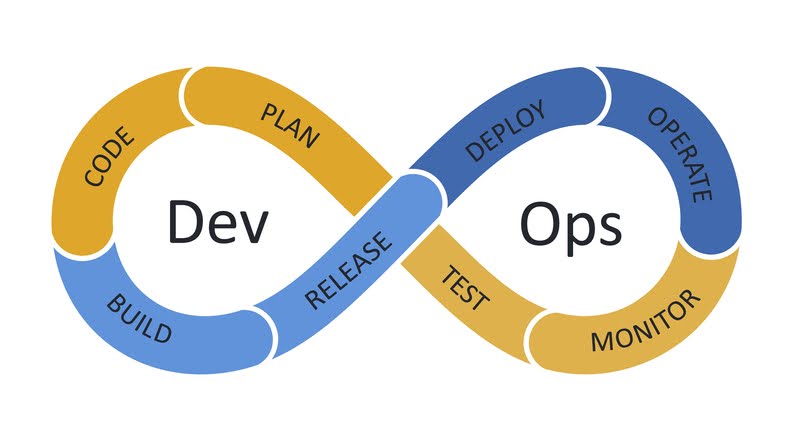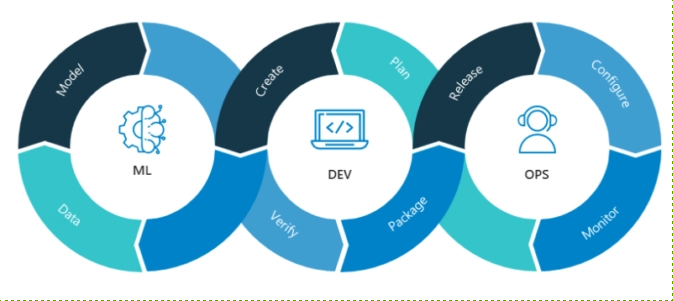MLOps vs. DevOps: The Key Similarities and Differences
DevOps integrates software applications, and MLOps implements quality checks and tests for data pipelines and machine learning model training and deployment.
Join the DZone community and get the full member experience.
Join For FreeDevOps has been an integral part of software development for the last 15 years. The ‘shift left’ culture, as it is popularly known, is employed across various organizations as it introduced new technologies, automation, and people systems to help shorten the software development lifecycle and provide continuous delivery of high-quality software.

With the rise of Artificial Intelligence in recent years, the structure of how enterprises are delivering and consuming AI has changed drastically with the proliferation of open-source technology. MLOps is the logical reaction to the current difficulties enterprises face putting machine learning into production.
What Is MLOps?
Machine Learning Operations (MLOPs) is a primary function of Machine Learning Engineering, focused on streamlining the process of taking Machine Learning models to production, in addition to their maintenance and monitoring requirements.
Similar to DevOps, it’s a collaborative function that involves Data Scientists, DevOps Engineers, and other IT stakeholders. Essentially, MLOps practices allow users to version control the entire ML Development lifecycle.
MLOps vs. DevOps: Head-To-Head Comparison
MLOps shares many aspects of the DevOps paradigm. While DevOps brings a quick, continuously iterative approach to deploying applications, MLOps borrows the same principles to take Machine Learning models into production.
The table below provides an overview of how MLOps vs. DevOps compare in terms of;
- Team skills
- Development
- Testing
- Deployment
- Production
| Steps and Skill Requirements | MLOps | DevOps |
|---|---|---|
| Team Skills | Data Engineers, Data Scientists, Machine Learning Engineers, Software Developers, QA, and IT Administrators. |
Software Developers, Data Engineers, Database Administrators, Quality Assurance Professionals and IT Administrators. |
| Development | Experiment with new data features and models to figure out what combination gives the best performance. |
Develop new features for the applications or fix existing bugs. |
| Testing | Data validation tests, model evaluation, as well as Unit and Integration Tests for application code. |
Unit and Integration Tests in a sandbox environment to capture any remaining bugs. |
| Deployment | Deploying newly trained models, maintaining data pipelines, and retraining routines. |
Packaging of the code, configurations, as well as dependencies, and then deploying them on production servers. |
| Production | Machine learning models are monitored for model drifts. | Applications and production environment are monitored for errors and bugs. |
It is important to note that each step of the MLOps process differs from DevOps due to its Development and Delivery requirements. With that in mind, let's discuss each of the steps above in detail.

Team Skills
Machine learning models are deployed as part of a broader application with multiple features and a functional UI. Building the application requires software developers, QA testers, database engineers and administrators, security experts, as well as IT administrators for environment setup.
While the roles highlighted apply to both concepts, MLOps requires additional skill sets, typically data scientists and machine learning engineers. These professionals are responsible for handling data extraction, creating data pipelines, and handling model training.
Development
In the context of DevOps, development refers to coding new features into the application or fixing existing bugs in line with client requirements. This procedure involves multiple developers working on multiple modules of the application.
On the other hand, development under MLOps requires the development of robust and reusable ETL and model training pipelines. The constant development ensures the pipelines are up and running. Moreover, it involves experimentation with new data features and ML models for improved performance.
Testing
Testing is a vital part of both DevOps and MLOps. For DevOps, the testing phase evaluates the quality of the code to check if it will hold up in production. As such, DevOps involves extensive unit and integration tests and evaluates each module to check if they behave as expected.
These tests are also present in MLOps, along with data quality checks and model performance evaluation. Data checks evaluate data models for unexpected schema changes that may break the pipeline, while the latter evaluates the new model's performance compared to the previous ones.
Deployment
The deployment phase involves pushing the necessary changes to the production environment. For DevOps, this means packaging the code and all its necessary configurations and dependencies and transferring them to production servers.
MLOps deployments involve setting up Continuous Integration (CI), Continuous Deployment (CD), and Continuous Training (CT) pipelines. CT pipelines collect new data, apply transformations, and re-train models. These new models are deployed using the CI/CD pipeline structures.
Production
The production phase for both paradigms involves health checks and application monitoring. DevOps monitors applications for unexpected errors and crashes. It also monitors the server's health, checking resource utilization to prevent downtime.
In contrast, MLOps monitoring involves monitoring model performance to check if it complies with production standards. Furthermore, it also monitors data pipelines for any failures.
Common MLOps Challenges
With all their benefits and advantages, MLOps procedures also face a set of unique challenges. Many of these challenges are related to data and model administration.
With each iteration of the training and deployment pipeline, the previous versions of the pipeline components are to be efficiently maintained.
- Data and model versioning: As data and models are updated with each training routine, the previous versions must be maintained for future reference as easy rollbacks. This requires an efficient and robust storage infrastructure.
- Data security concerns: The data utilized for training must be kept in a secure environment, safe from malicious attacks.
- Model metric tracking: Model metrics must be tracked to monitor performance. These metrics depict whether the model is performing as expected or if the infrastructure changes are required.
- Data drift monitoring: Data drift occurs when there is a change in its distribution. Data must be constantly monitored against pre-defined metrics to detect any unusual changes. If a drift is detected, the model must be retrained to maintain accuracy.
Looking at the bigger picture, it is clear that MLOps is not an entirely novel concept. Instead, it is the extension of the original DevOps paradigm. It adds additional steps and functionality to accommodate the principles of data science. For this reason, the new MLOps culture benefits data scientists by streamlining the creation of data pipelines, feature engineering, model training, and deployment.
Conclusion
The DevOps culture is designed to automate software product development, testing, and deployment. However, conventional DevOps does not cater to data science practices, which necessitated the conception of the MLOps paradigm.
MLOps borrows aspects from DevOps but includes several elements to automate data science and machine learning projects. It includes a broader skill set, such as data engineers, data scientists, and machine learning engineers.
Furthermore, while DevOps integrates software applications, MLOps implements quality checks and tests for data pipelines and machine learning model training and deployment.
These implementations enable organizations to construct reliable data infrastructures and apply continuous implementation, deployment, and training for machine learning models.
Published at DZone with permission of Florian Pialoux. See the original article here.
Opinions expressed by DZone contributors are their own.

Comments